Your Next Great Stock: How to Screen the Market for Tomorrow’s Top Performers
$12.75
| Author(s) | |
|---|---|
| Pages |
254 |
| Format |
|
| Publication Year |
2008 |
Your Next Great Stock is about finding stocks that are poised to become the market’s next big gainers. It’s more a detective manual than an investment book. You’ll be able to find these companies because they’ve already left clues.
Introduction:
This book is a hunt for Lynch’s ten-baggers. It won’t show you how to allocate your assets among stocks, bonds, real estate, cash, and other holdings, although you should take the time to learn that elsewhere. It won’t tell you how to develop a long-term savings plan, although that’s important to know, too. It’s simply about going after stock returns large enough to more than make up for your mistakes.
This book is for anyone who buys stocks or wants to. It won’t require math skills beyond some quick arithmetic, and it will provide the background investment knowledge you’ll need along the way. The book contains about 75,000 words. If you read at an average pace (about 250 words a minute) it will take you five hours to finish. Let’s look at what you’ll cover during those five hours.
- Part One: Your Next Great Stock: If you’re wondering whether it’s possible to beat the stock market or whether you should try, this section will provide the answers.
- Part Two: Tools and Clues: Here you’ll learn about what’s in that mountain of information you’re going to screen through, and which tools are best for the job.
- Part Three: Strategies: This is where you’ll make money. I’ve collected 15 of the most powerful stock-screening strategies I’ve found. Most come from the kind of leading-edge market researchers who advise hedge funds and institutions on their stock-picking methods. All the strategies are backed up with concrete evidence that shows they work. A few are designed to mimic market-crushing money managers like Warren Buffet and Peter Lynch.
- Part Four: Your Next Great Stock, Revisited Here you’ll learn what to do with that handful of stock-screen survivors you’ve just produced.
Contents:
- You Should Own Stocks
- You Can Beat the Stock Market
- If Stock Picking Strategies Work, Why Haven’t They Been Used Up?
- Stock Screening Is the Best Way to Find Great Stocks
- The Rewards Outweigh the Risks
- Telling Great Screening Strategies from Not-So-Great Ones
- How to Use a Screening Tool
- Where the Numbers Come From
- Things You Can Screen For
- How to Use the Strategies
- The Buy High, Sell Higher Screen
- The Impatient Value Screen
- The Surprise, Surprise Screen
- The Tomorrow’s Breakthrough Screen
- The New Dogs Screen
- The Bold Is Beautiful Screen
- The Rising Expectations Screen
- The Follow the Leaders Screen
- The Accrual to Be Kind Screen
- The Sales on Sale Screen
- The Combination Platter Screen
- Guru Screens
- Which Screen Survivors to Buy
- When to Sell
Your Next Great Stock: How to Screen the Market for Tomorrow's Top Performers By Jack Hough pdf
17 reviews for Your Next Great Stock: How to Screen the Market for Tomorrow’s Top Performers
Clear filtersOnly logged in customers who have purchased this product may leave a review.

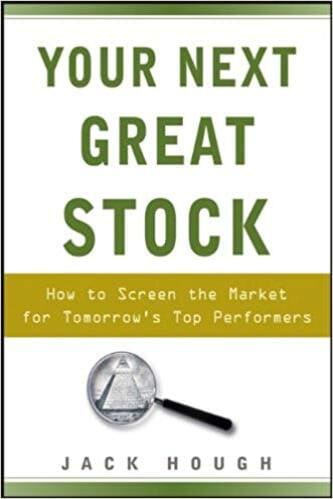

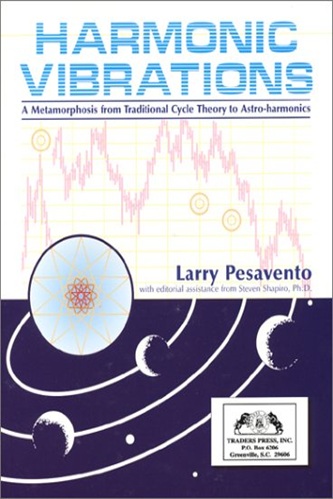
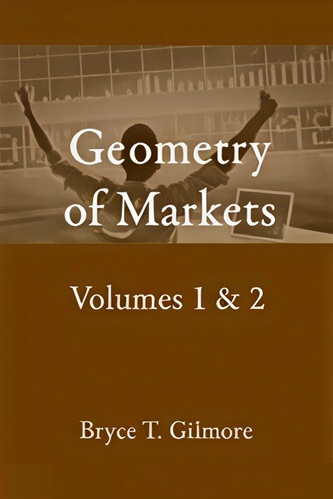
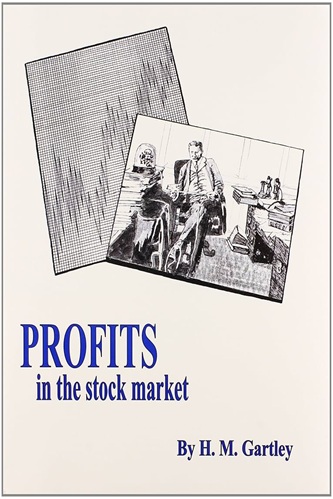
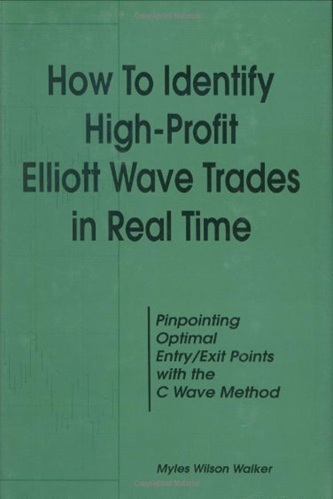
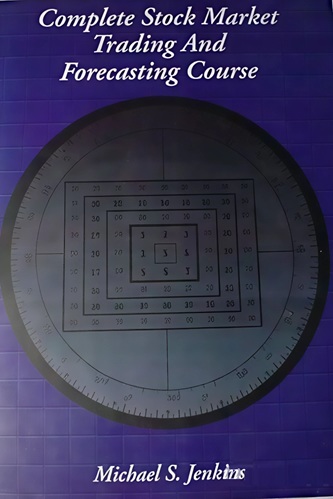
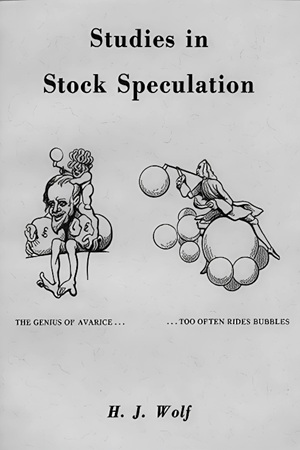

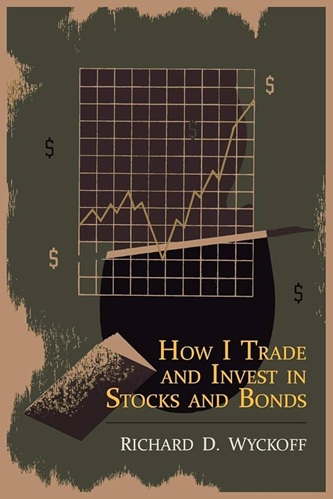
Bobby Whitney (verified owner) –
I have not had the time to read the book. So I cannot give an full honest opinion.
I will post an update when read.
I am hoping I will make money with it.
Yasmin Evans (verified owner) –
Mr. Hough has made the stock Market easy to understand and follow. I always felt intimidated by the process, but now I am finally able to make my own decision and not rely on someone else. I am looking forward to his next book, keep up the great work.
Case Chan (verified owner) –
Excellent details on setting up the stock screens discussed both in the book and the author’s monthly column in SmartMoney magazine (also weekly on […]). I have had success using the 3 stock screens I’ve used from the book–however, screens are still no substitute for research on the prospective stock/company purchase. As Jim Cramer would say, “Do you homework!”
Jase Fields (verified owner) –
I bought this book because I sometimes read Jack Hough’s stock stories on SmartMoney and two picks of his I followed have done great. I recommend the book to anyone who wants to make money in stocks. It’s pretty short, I read it in two days. The strategies make a lot of sense and the explanations are easy to understand.
Oakleigh Manning (verified owner) –
I’ve read a lot of books on investing and put simply, this is one of the best books about stock picking I’ve read. It offers a straightforward yet effective methodology for finding good companies at good prices that anyone with a computer and an Internet connection can use. The writing is clear and concise (and often witty), and the ideas are practical for any investor who wants to beat the broad market. (And which one doesn’t?)
Annie Pennington (verified owner) –
I agree with the earlier reviewer who noted that the most effective section of this book is the one that explains why many investors could be better off selecting their own stocks and avoiding mutual funds. The section on screening was interesting but would have been stronger with actual examples.
As another reviewer noted, there are a few eyebrow-raising errors. Warren Buffett’s last name is misspelled throughout the book, for example. On page 97 the error is compounded in an unintentionally amusing way, when a reference to the styles of Buffett and Peter Lynch becomes “the Buffet and Lunch strategies.” Sounds like the copyeditor might’ve been distracted by hunger!
All in all, a good introduction for Do-It-Yourself investors.
Russell McMillan (verified owner) –
This is an outstanding guide to picking stocks. It presents some of the best-supported and most logical strategies I’ve seen for beating the market, and serves as an easy-to-read backgrounder on many financial subjects (some of which can be pretty complicated). The writing is clear and jargon-free and funny in parts.
There are basically three parts to the book. The first is not to be missed. You won’t buy another actively managed mutual fund after you read it. You might not buy an index mutual fund, either. The author demystifies (debunks, really ) such high-brow finance topics as the efficient markets hypothesis and capital assets pricing model by tracing the history of probability math and showing how it was gradually misapplied to the stock market. I suffered through several investment courses in college and have long wondered about the everyday usefulness of the material, so I was fascinated by the author’s case that much of it amounts to “mathematical incest” and a mischaracterization of risk. This part also has a highly useful guide to telling reliable stock picking strategies from bad ones. There’s a list of “financial parlor tricks,” or ways that investment firms and stock-picking services sometimes fabricate their performance numbers.
The middle section is short. It contains just enough of an intro to financial statements so that you’re familiar with most of the terms used in the later strategies chapters. It also has a brief review of screening tools. (The author writes for a company that has one, but he’s up-front about this and mostly just lists the features of each
screener.) This section also has basic info on how to use screening tools. Keeping this section so short was a good idea, I think. It keeps the reader from getting bogged down before getting the to payoff in the next part.
The last part contains what many people will probably buy the book
for: a round-up of the best stock-screening strategies the author says he has found during his work writing columns on the subject. I found several that Ive already started using. One chapter has a way to considerably improve the returns to a strategy I already knew about (Dogs of the Dow). Another is about using research spending to find companies whose earnings might be about to surge. Whether you’re a growth investor or value investor (or both) you’ll almost certainly find something here that can boost your investment returns. To me that makes the book a bargain.
All told: Excellent beginning, good (and short) middle and excellent end. I highly recommend this book to anyone who invests.
Remington Strickland (verified owner) –
As expected
Alexia Byrd (verified owner) –
I liked this book and was really excited to start screening for stocks as the book suggests, but found myself unable to follow through with its screening techniques. My lack of follow through was not due to lack of motivation, but due to vague descriptions of the stock screens with no clear way to implement them. I tried three of the screeners suggested and was not able to get any of them set up to screen as the book described. It would be helpful, essential even, for the author to include real world examples so readers can apply his screens as laid out in the book. For reference, I run my own business, read the WSJ and am not a novice investor. This is a book which could be made much better and more useful with a clear way to apply the techniques. I was not able to accomplish it.
Elias Hendricks (verified owner) –
This is one of the best investment books I have read. It presents a strong case for why you should invest in stocks and why you should rely on yourself in doing that (instead of relying on analysts).
The book describes the process of screening stocks in general and then presents a clear description of 12 screens that look for different kinds of quality stocks to buy. A chapter is devoted for each screen. I found the screens useful, sound, and well explained. The author presents a good explanation of the most important financial ratios and accounting concepts for readers that are not familiar with finance and accounting. Then, he shows how to use them wisely in building screens.
One of the things I liked the most about the book is the presentation of results and ideas from many scholarly research articles from respected journals in finance and accounting. These journals are very important and the author seems to be following the research and results that appear in them.
The missing star is for a couple of inconsistent conditions in one of the screens and a wrong statement about arithmetic averages on page 39. Other than that, I strongly recommend this book for every investor.
Dani Lin (verified owner) –
Excellent, easy to read and understand.
Conor O’Neal (verified owner) –
Wonderful book. I couldn’t put it down. The author is fabulous. Would give it ten stars if I could.
Treasure Wolf (verified owner) –
I was looking forward to this book, as it seemed to be consistent with my own investment philosophy: do your own research, screen for potential winners, etc. The author does a good job of presenting why stocks are your best type of investment, and why stock screening can lead to higher annual returns. But the book itself seems to be written for a beginner. As an example, Hough gives a one page overview of how to read a balance sheet, income statement, and cash flow statement. I’m not sure three pages of material does that topic justice. Nor do I believe anyone with no conception of these financial reports should be picking their own stocks: better to just invest in index funds if you’re still at this very basic level.
Hough does give some examples of screen strategies he apparently uses himself in real life, and this is helpful. However, it’s never clear if these screening techniques work in practice because – and here’s the biggest weakness of the entire book – Hough does not give one example of a company he found with these screening techniques. Not one. Why couldn’t he include some winners that he initially found from using the techniques recommended in the book? It’s a huge omission, and really hurts the credibility of his message.
His general approach seems sound. But I wanted a lot more details, especially real world examples of success (and perhaps even a few failures) he’s had with these strategies. Very disappointing.
Still, if you are new to investing, this is probably a good overview of stock screening, and can get you started. However, I strongly recommend doing additional study on a host of items briefly discussed in this book before committing a lot of capital to the stock market. Until you feel comfortable, stick with index funds. But definitely invest. On that I agree with the author completely.
Cristian Hartman (verified owner) –
Should you feel doubt about leaving your investments only in index funds, this book offers an entertaining alternative.
Part One is a general discussion and argument for stock picking,
Part Two is a description of stock screeners (free and subscription) and review of “where the numbers come from” (income statement, balance sheet, cash flow statement),
Part Three is stock screening strategies (“The impatient value screen”, “The new dogs screen”, etc.),
Part Four is, where do you go from here?
The author has a down to earth, entertaining style, explaining pros and cons, what works, what may work, etc. He is realistic about the methods, pointing out possible limitations, weaknesses. He even includes an often missed area, “When to sell?”.
I missed however a little more discussion on technical analysis (I know you can not use screeners for that), trends, general review of favorable and unfavorable market conditions, the role of the Fed and monetary policy, the role of economic indicators, the presidential cycles and, most of all, some samples as well. I understand that a screen run, say in 2003, may have little value now, but a list of potential top 5 or top 10 stocks, then the dissection of these samples would have provided the reader a little more practical advice. Even better, a figure of the given stock price chart would have presented a “face”, a visual image that would have greatly complemented the mostly fundamental screening strategies. In fact, the author could have looked back to the “winners” and described if they were really winners or losers.
At the end I came away from reading this book with that perhaps the best way of picking stocks is to narrow down the stock picking hobby to a sector. Familiarize myself with the unique challenges and qualities of the sector, then start the screen. This way it is a little easier to compare companies as the business operations show more similarity. The Warren Buffett dictum “Favor businesses you can understand” may require more time than most of us have, but getting familiar with a sector perhaps makes it easier to screen for winners and losers.
Overall, I liked this book and learned some tricks. But Mr. Buffett has nothing to fear…
Kennedi Pham (verified owner) –
Very interesting and based on good logic and research. The only downside is that I often found myself fast forwarding the pages because a lot of it was a bit of boring details. However, I am very happy with it and consider it one of the best ebooks I’ve purchased.
Madalynn Briggs (verified owner) –
In general, the book is an easy read even for a novice investor, and contains solid ideas as well as practical advice.
The stock screen web site that Jack Hough and Smart Money make available for free is pretty limited. The book points out the features of various for-fee stock screen services, and informs the reader about their cost.
Some of the screens recommended in the book are difficult to implement in practice.
This book is strictly about stock picking, and does not cover portfolio design that is probably more important than individual stock picking for achieving superior returns. Therefore, the book’s true value can be best realized if its used together with other books (e.g., Ken Fischer’s “The only three questions that count”).
Chapter 3 has some excellent insight about behavioral finance; the reader should re-read this chapter when doing the post-screen selection.
Chapter 9 was probably the most disappointing part of the book. It attempted to explain how to read and interpret income statements, balance sheets, and cash flow statements, but the coverage was cursory – insufficient even as an introduction.
There were some errors in the book that were pretty self-evident, and indicated that additional proofreading would have been needed.
I also missed a number of things from the book. For example, the Author stated about the various stock-picking screens that they could beat the market by a certain percentage point per year, and when back-tested over a long period, what was the total and annualized return. What is missing here is the actual holding period after buying the stock. The stock screen reveals good prospects that are, by definition, good today. But it is obvious that their advantage is temporary; buying them today does not guarantee market-beating returns for the next five years without selling the stock and buying another that takes its place by the same screening process. The turnover rate of the screens is extremely important because of the impact of commissions and taxes on the realized gains. Just as the compounded interest is powerful to increase wealth, the compounded impact of taxation is powerful robbing one of that wealth. Hough describes screens that beat the market by e.g. 6%, but if it is in a taxable account, and the screen requires a less than 12 months holding period, much of the gain will be eaten up by the taxes to the point that a merely market-matching index fund that does not incur tax expenses (no realized gain, very long holding period) may come out ahead. Of course, that is not an issue in an IRA account.
It is highly respectable that Hough does not promise outlandish results – no hype here. All in all, this book is a good addition to your library’s selection on stock market investing.
Seth Alfaro (verified owner) –
I believe it is important to have a repeatable method that can be monitored, tested and tweaked to select stock candidates. Stock screening best fulfills this requirement. Your Next Great Stock provides comprehensive basic training about screening and also includes advanced information, tools and strategies. Since I am an advanced screener, most of my focus was on Part Three: Strategies. Here, the author provides the reasoning and academic sources supporting the 10+ screens and lists filters that can improve screen results and limit selections to a manageable number.
I learned from this book and highly recommend it.